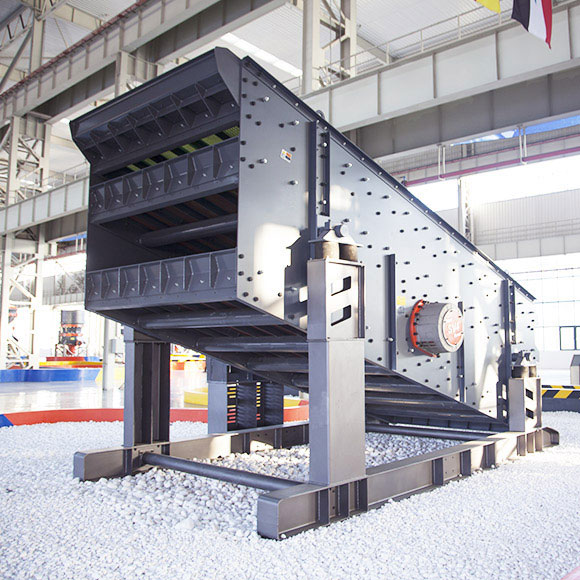A circular vibrating screen is a crucial piece of equipment in the aggregate, mining, and construction industries, especially when dealing with materials like sand and gravel. This type of screen is widely used for grading, sizing, and separating a wide variety of materials, ensuring that only particles of the desired size pass through, while others are either reprocessed or discarded. Here’s an in-depth look at how it operates and its significance in processing sand and gravel.
Principle of Operation
A circular vibrating screen operates on the principle of circular motion, which is generated by an eccentric block or shaft connected to a motor. When the motor rotates, it causes the screen body to vibrate in a circular motion. This motion effectively causes the material on the screen to move in a spiral trajectory. The circular motion helps to separate different sizes of particles as they pass through various layers of screen mesh.

The screen usually consists of multiple layers of mesh with varying sizes, from coarse to fine. As the sand and gravel are fed onto the screen, the vibration causes the material to be stratified according to size. Larger particles stay on the top layer and move towards the outlet, while smaller particles pass through the mesh openings and are collected separately. This stratification ensures efficient separation, maximizing output and reducing the need for further processing.
Key Features
- High Screening Efficiency: The circular motion ensures that the particles are thoroughly agitated, which increases the chances of smaller particles passing through the screen. This leads to high screening efficiency, making it ideal for sand and gravel operations.
- Durability and Stability: Circular vibrating screens are built to withstand harsh working conditions. The robust construction and use of high-quality materials make them durable and capable of operating continuously under heavy loads without significant wear and tear.
- Adjustable Vibration: The intensity of the vibration can often be adjusted to suit different materials and operational requirements. This flexibility allows operators to fine-tune the screen’s performance, ensuring optimal results for various types of sand and gravel.
- Multiple Decks: Circular vibrating screens can be equipped with multiple decks, each with different mesh sizes. This allows for the simultaneous separation of materials into multiple grades, which is particularly useful in sand and gravel processing where different grades of material may be required for different applications.
- Low Maintenance: The simple design of the circular vibrating screen, combined with the use of high-quality components, results in low maintenance requirements. Regular inspections and occasional replacement of worn-out parts, such as screen meshes, are typically sufficient to keep the screen running efficiently.
Applications in Sand and Gravel Processing
In sand and gravel processing plants, circular vibrating screens play a crucial role in ensuring the quality of the final product. After the initial crushing and screening processes, sand and gravel materials are passed through these screens to remove any unwanted particles or to classify the material into different sizes.
For example, in the production of concrete, the sand and gravel must be of a specific size range to ensure the strength and durability of the concrete mix. Circular vibrating screens ensure that only the appropriately sized particles are used, enhancing the quality of the final product.
Moreover, in road construction, different layers of the roadbed require different sizes of gravel. Circular vibrating screens help in producing the right sizes for each layer, contributing to the road’s stability and longevity.

